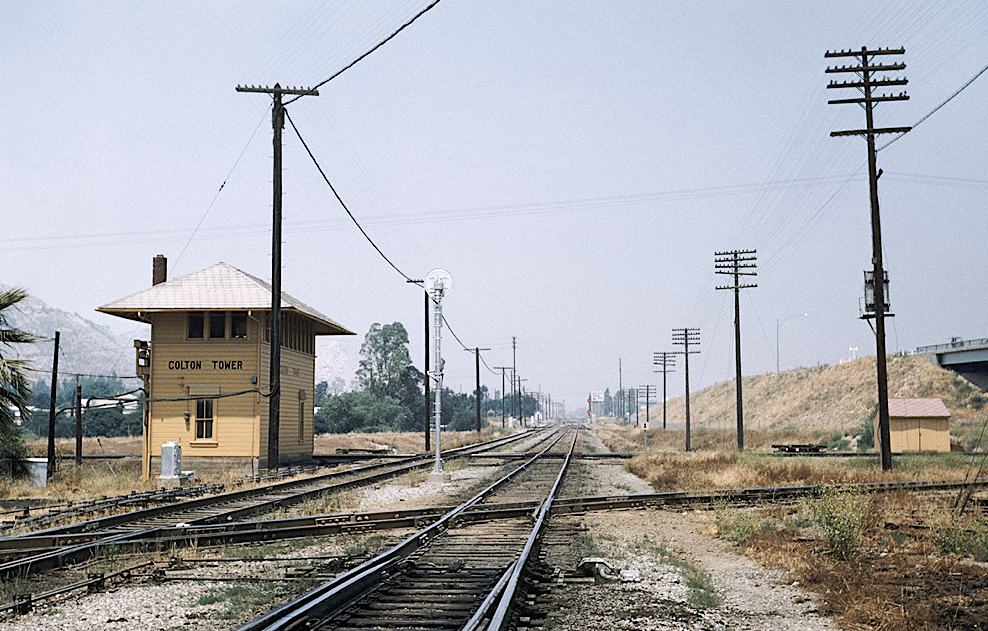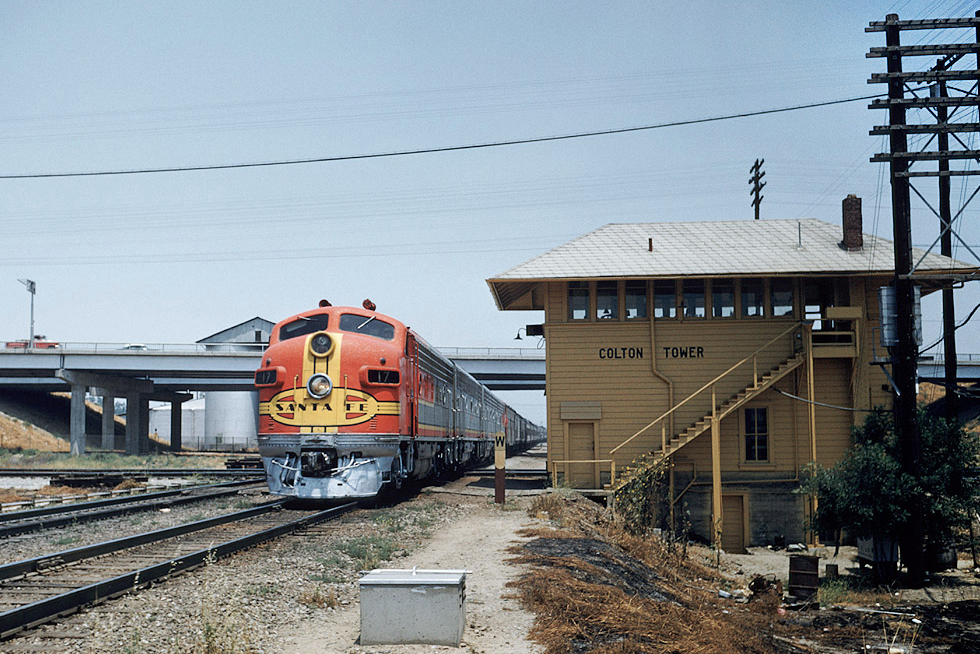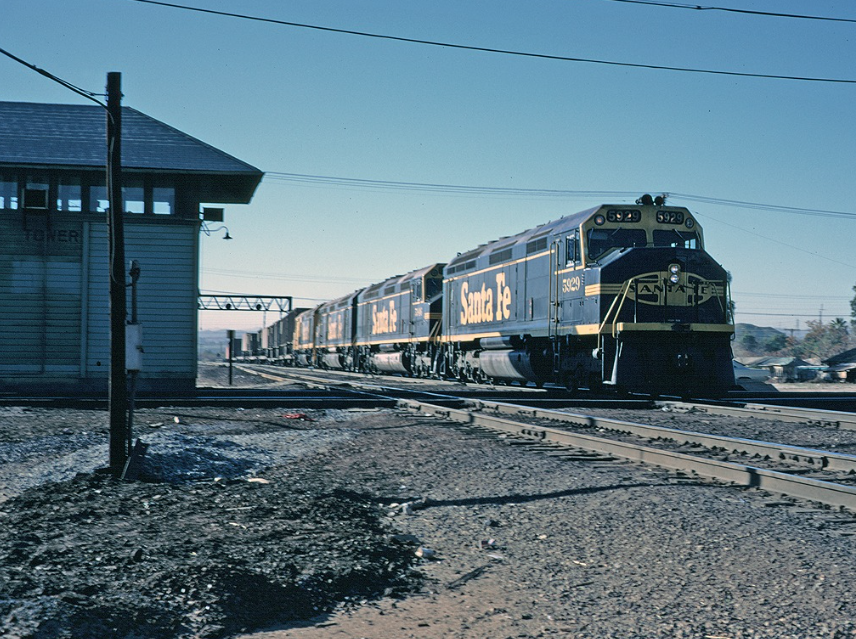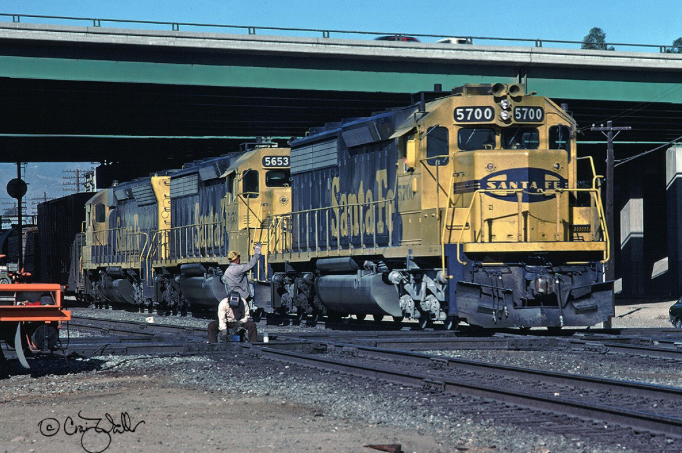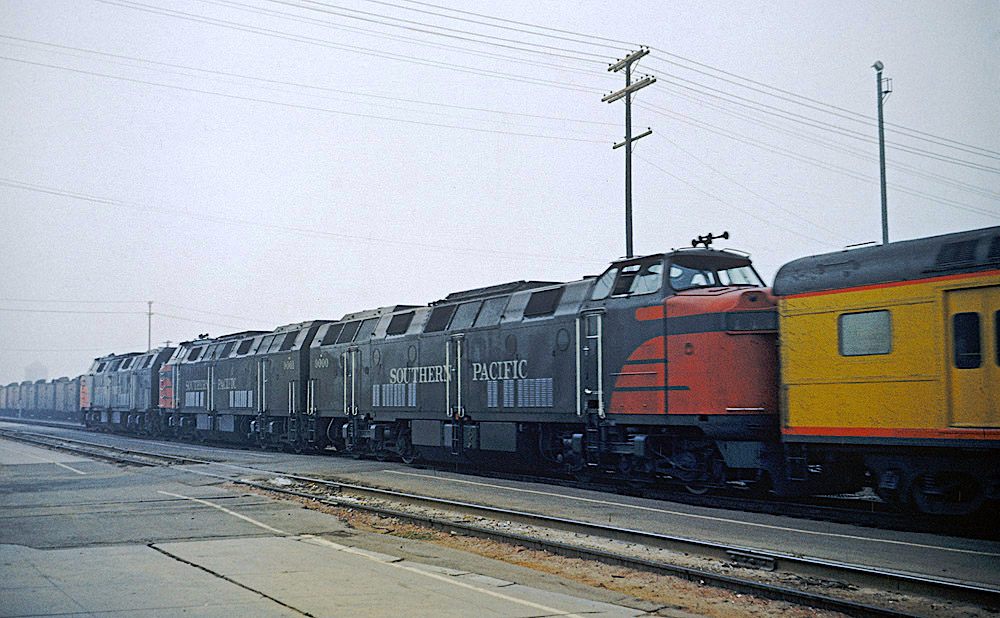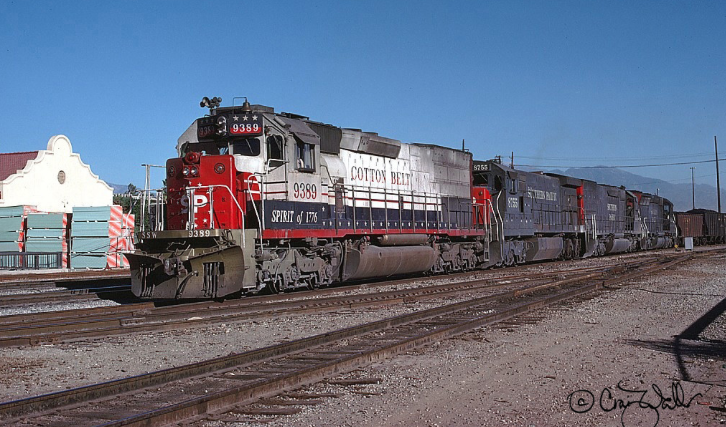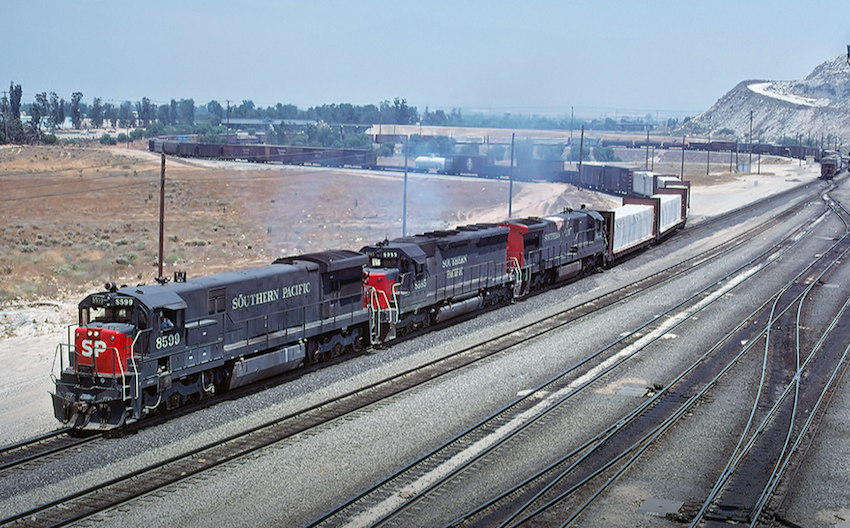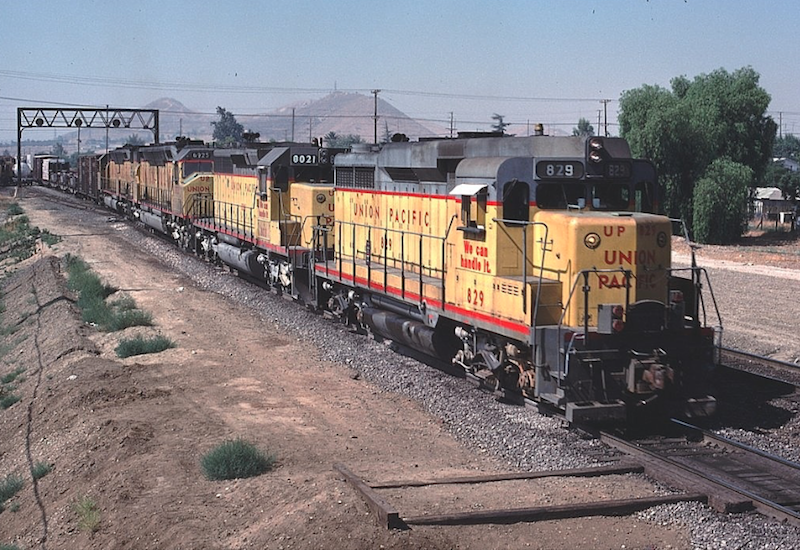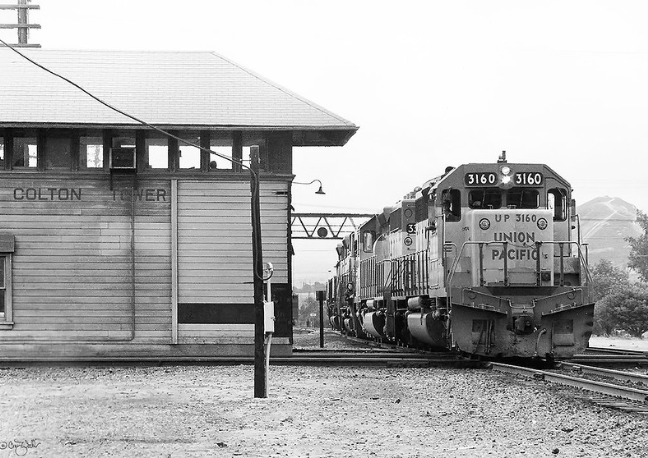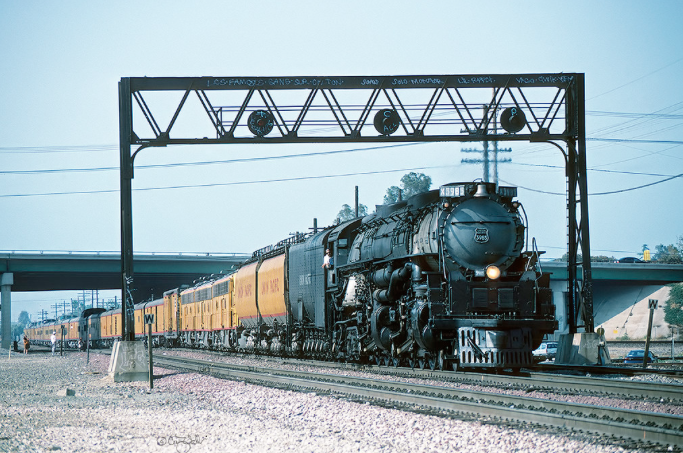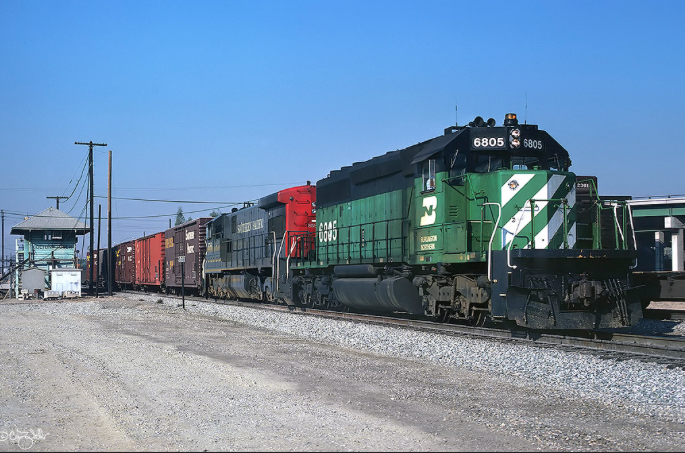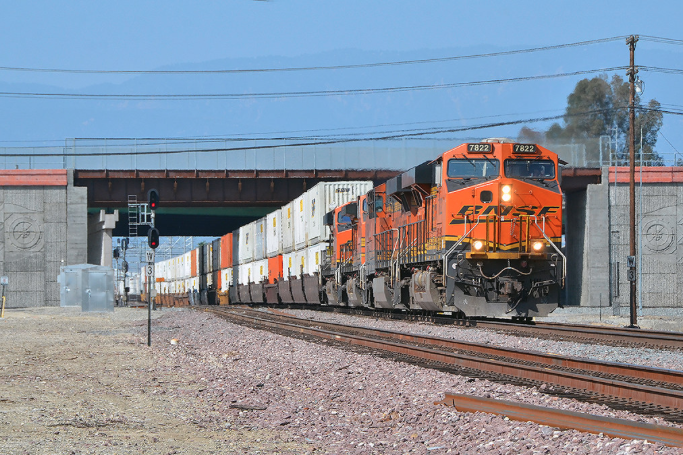Colton Crossing: California's Lost Hotspot |
|
|---|---|
 Cotton Belt SD45 #9066 leads a U30C and an SD45T-2 on an e/b manifest in the 1970s. (Craig Walker photo) Blank |
|
| California is a railfan magnet by any type of measure. It's a place of
strong geo-physical contrasts and legendary names such as Altamont, Cajon, Donner, Feather
River Canyon, and Tehachapi. As such, the Golden State generates excitement and energy,
while rendering widely divergent and breath-taking scenery. There is the vast expanse of the
blue Pacific Ocean, the splendor of the rugged Sierra Nevada Mountains, the mystique of the
Mojave Desert, and the drama of busy urban environments. And of course, there is the welcomed
chorus of steel wheels rolling on the rails of commerce.
However, an important name is missing from the list of legendary locations -- it's southern California's Colton Crossing. Located east of downtown Los Angeles by some 50 or 60 miles, Colton has been long noted for heavy action. Built one or two years prior to 1920, The tower, which was a two-story, wood-framed replacement structure, provided protection for trains of the Santa Fe, Southern Pacific and Union Pacific (via trackage rights on Santa Fe) as they moved through the crossing. The two-story building was situated at the southeast corner of the SP/ATSF diamond. A lot has changed at Colton Crossing in the last few years - The tower is gone (demolished July / August 1979), connector tracks rearranged, and now the diamond crossing itself is gone as a flyover grade separation has been constructed to cross the Union Pacific's Yuma Subdivision (the former Southern Pacific's Sunset Route) over the BNSF Railway's San Bernardino Subdivision (the former Santa Fe Third District). This change, while disappointing to those railfans who find crossings at grade of interest, has removed what had often been a choke point for rail traffic in southern California. Please join us as we take a look at some of the reasons why Colton Crossing of old was a southern California hot spot and railfan treasure. New: 1 May 2019 |
|
